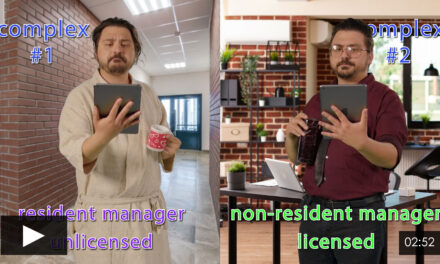President Donald Trump was recently criticized for leaked emails in which his administration planned to retaliate against political opponents by releasing U.S. Immigration and Customs Enforcement (ICE) detainees in sanctuary cities. This heavy-handed tactic scored points with his supporters and drew the ire of opponents in California, which is home to over 45 sanctuary cities.
But sanctuary cities are more than a political football; they have tangible effects on local industries. California’s economy depends on the roughly 2.6 million undocumented immigrants living there and the real estate industry is no exception.
Fewer immigrants means fewer buyers
First, a reality check. A recent first tuesday poll asked readers about the effects of mass deportations on the real estate industry. A plurality of respondents believe that deporting California’s 2.5 million undocumented immigrants will have absolutely no effect on the state’s housing market. 37% of voters see home sales volume rising in response to a sudden vacuum of a group of potential homebuyers.
Some experts are not as optimistic. A 2016 study between Brigham Young and Cornell Universities finds that increased deportations between 2006 and 2008 led to a higher rate of foreclosures in the years that followed among Latino households when compared to other ethnic groups.
One third of undocumented immigrants live in owner-occupied homes, according to a New York Times interview with the study’s authors. Three-quarters of these households are comprised of individuals with different documentation statuses. When mixed-status households pool together resources, their household inevitably collapses when a financial contributor is deported and the household is unable to timely make mortgage payments. This is partly how California’s foreclosure crisis played out.
The Brigham Young/Cornell study suggests that Trump’s mass deportation policy will likely result in another spike in foreclosures. Their absence will also be felt in the rental market. California needs Latino buyers. If these drastic immigration policies gain traction, agents currently serving communities with any significant Latin American population can expect fewer buyers, falling prices and dwindling fees as well.
Real estate sanctuary
Widescale deportations like those studied by Brigham Young and Cornell are achieved through U.S. Immigration and Nationality Act Section 287(g) agreements. These are arrangements in which local law enforcement officers may be deputized into federal immigration agents to interrogate and further detain suspected undocumented individuals as part of their regular law enforcement activities.
This is where sanctuary cities come in. Though there is no legal definition of sanctuary cities, the term is used to describe a municipal jurisdiction that limits its cooperation with ICE’s effort to enforce immigration law. This includes prohibiting 287(g) agreements. In turn, local law enforcement agencies are better able to build trust with undocumented immigrant populations.
Not-in-my-backyard (NIMBY) advocates worry that sanctuary cities will jeopardize their neighborhoods’ safety, but these fears are statistically unfounded. Sanctuary policies make undocumented individuals more willing to report crimes and cooperate with investigations. In fact, white residents of sanctuary cities are safer from violent crimes than those in non-sanctuary cities, according to a 2017 Center on Juvenile and Criminal Justice report.
The California Values Act (Senate Bill 54), more commonly known as the “sanctuary state” law, went into effect January 1, 2018. The controversial law basically applies the sanctuary city model to the entire state of California, limiting how much local law enforcement can cooperate with ICE in enforcing immigration law.
This law prohibits local law enforcement in California from:
- entering into 187(g) agreements;
- inquiring about an individual’s immigration status;
- extending an individual’s detainment with an ICE detainer request;
- arresting an individual based on a civil immigration warrant;
- providing office space in local jails exclusively for ICE;
- using ICE agents as interpreters;
- participating in immigration enforcement task forces,
- providing ICE with an individual’s non-public personal information;
- notifying ICE of an individual’s release date, with few exceptions; and
- transferring an individual into ICE custody, with few exceptions. [Calif. Government Code §7284.6(a)]
This law shuts down the 287(g) agreements that exacerbated California’s foreclosure crisis by targeting Latino communities. By creating a sanctuary state, the California Values Act protects its most vulnerable communities, gives them an opportunity to invest in their neighborhoods and protects local real estate markets from economic instability caused by federal agencies.
Echa pa’lante! (Onward!)
California’s new statewide sanctuary policies are poised to lift a community of homeowners and renters out of the darkness. This will be a boon for California’s economy as immigrants account for two-thirds of economic growth in the U.S. since 2011, according to a Citigroup and Oxford University study. Despite immigration’s negative perception, it presents an unprecedented economic opportunity for California’s local industries, including real estate.
Real estate agents are in a unique position to capitalize on a growing population that needs homes. Because Fannie Mae and Freddie Mac only purchase loans held by legal residents, agents looking to take on undocumented clients will need to familiarize themselves with alternative mortgage products. For instance, prospective buyers can still become homeowners without a Social Security number by using an Individual Tax Identification Number (ITIN).
Obtaining an ITIN mortgage is more difficult than obtaining a traditional mortgage, so only those with exceptional financial histories may qualify. Because ITIN mortgages present a unique risk, homebuyers can expect higher down payments and rates than conventional mortgage products. Is your practice versed in the extra steps it takes for our 2.6 million undocumented immigrants to purchase homes? Find out more about ITIN mortgages here.
Learning the language of your area’s most populous immigrant community, be it Spanish or Mandarin, can also give your practice a competitive edge in hard-to-reach pockets of your service area.
Regardless of your feelings on its immigration policy, California continues to lure residents from around the world in every price tier. Is your practice ready for them?




















FT Supporting illegal actions are not good for any country. You are encouraging us to ignore basic tenants of honesty!
WC
Twisted Logic. When illegal immigrants are deported it frees up housing. If all illegals were deported the current housing crisis in California would be reduced or eliminated.
Unbelievable! First Tuesday is now convincing agents it’s okay to help law breakers buy homes! Absolutely disgusting !
Surely we are in the end times when evil is good is the norm.
I surely hope the good people of this date do not “capitalize” on criminals as first Tuesday is suggesting.
MERCY,MERCY,MERCY PEOPLE, lets take a cold shower and then look at the facts, this is a national issue that involves 12 million people and
our paid Congress people do not know how to deal with it. instead, they use the time to deal the with the President’s issues that happened 3 yrs ago and its is free advertising for their re-election.Lets face the facts, these people work, consume and help the economy grow, the financial institutions have discovered that they are very good risk to the point that personal, auto, and real estate loans are available to them.
Lets remember that is more constructive to Love than to Hate. it does not cost any money and takes less energy.
Prop 13 was approved by the people and it was, is , and will be books as approved-NO DEVIATIONS
Concur Brad! Very obvious on this and several other articles first Tuesday stands for to the left. Stay on topic and out of politics! My first and last time with this company!
I’ve lived in California my whole life from the Bay Area to far Northern California. There are many good people leaving this state because of these policies. Crime rates are skyrocketing. First Tuesday and ft Journal you are part of the problem. GeorgeW, Brad and Jim I wholeheartedly agree. Time to start taking a stand.
What is this article really saying? The state’s disregard for immigration laws has now become so integrated into its economy that it must continue that horrible and illegal choice. The same rationale could apply to drug dealing, child trafficking, and other underground markets. The US has only 4% of the world population. If its going to be run as a church or a charity, you best understand it will be overwhelmed. If the state got in so deep that they can’t back out without economic harm, then that was a very poor reliance. The cost to back out if this defective and illegal policy is now being used to justify its continuance. Its twisted logic – plain and simple.
I predict future liability for sanctuary cities. They are harboring fugitives and criminals. This exposes sanctuary cities to all the costs and damages that any harbored illegal imposes from that day forward to any government or person.
I will tell you a story about my neighbor when I lived in Agoura Hills. He was a senior trial attorney for the State Bar Association. I hired a stone mason to do some brick work. It looked so good that my neighbor hired him. Knowing that my neighbor was a lawyer, the mason asked for some advice about handling a few traffic warrants he had outstanding. The attorney fired him immediately. He later explained it to me. Hiring him is harboring a fugitive. He also explained the purpose and intent of that law. It is intended to flush out the fugitive by denying him even the basic necessities of life. He said it would be illegal to provide the mason a glass of water even if he was dying of dehydration. So what exactly are these sanctuary cities doing?
Wow. So First Tuesday supports persons coming and staying in our country ILLEGALLY. I’m not talking about immigrating here the legal and correct way; I am talking about entering and staying ILLEGALLY. Incredible what a company will do to try and make money- Tell your agents if we enforce our current laws you will have less home sales and lower commissions. Doesn’t matter what is right and what is wrong, it only matters what is best for your own purposes. Wow. Where will it all end folks! I will no longer use your services. Moving on to Pro Schools.
Good for you Brad. I agree. I am tired of the site supporting repeal of prop 13 and illegals. Country first.